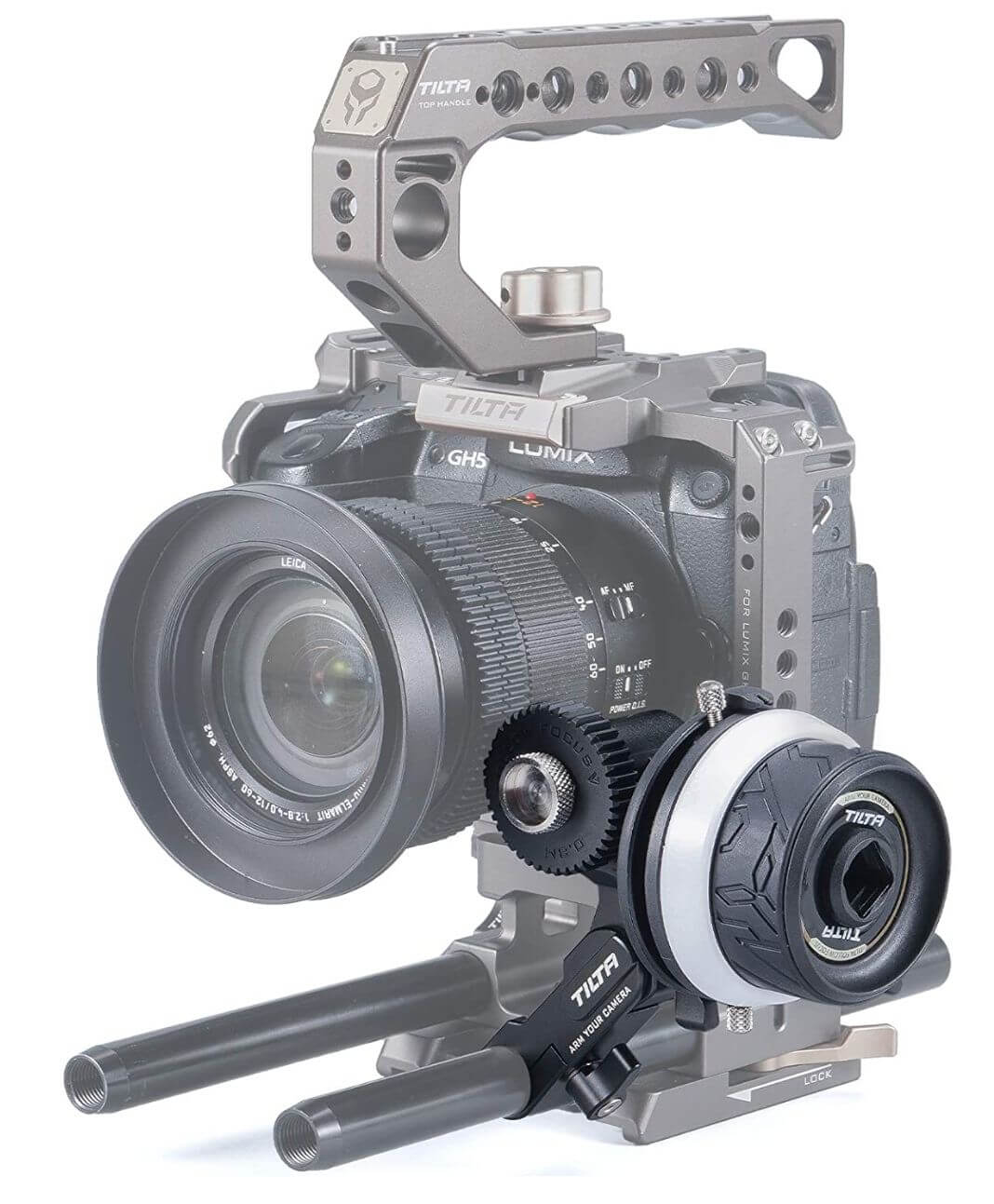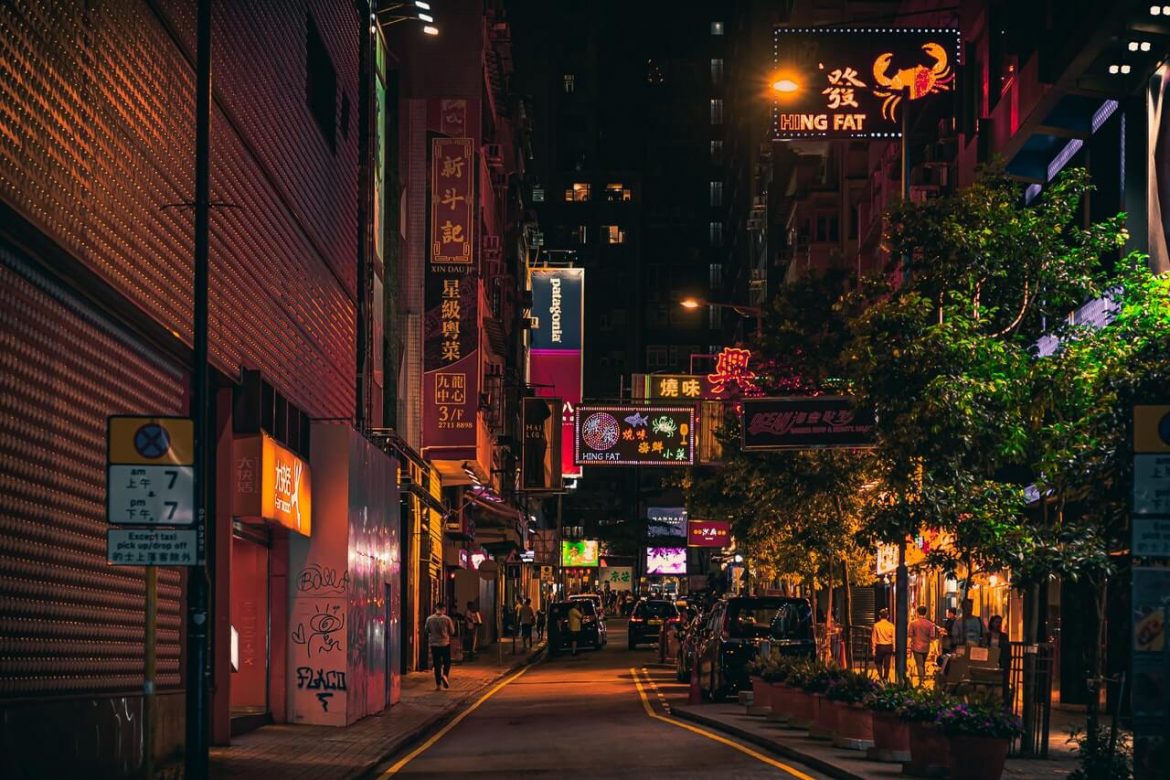A cine lens (cinema lens) is a special type of photography lens that is designed specifically for film and video production. That means that they are designed to record motion. Therefore, cine lenses have well-marked focal lengths and aperture markings on two separate rings that can be manually adjusted.
Therefore, instead of using autofocus and having to change your aperture in-camera, you are able to do so with some rings on the lens.
In this tutorial, I will explain the main features and characteristics of cinema lenses, and why they are so different from still photo lenses.
What is a Cinema Lens?
Cinema lenses (Cine lenses) are photography lenses specifically designed to shoot high-quality videos and movie films. They record continuous motion and offer exceptional video quality, making them perfect for cinema production.
A true cinema lens is highly superior to still photo lenses in terms of design, features, and construction. Thus, any lens that possesses the true capabilities of a cine lens will definitely cost a fortune.

Before going deeper and explaining the features of a cinema lens, and what makes it different from a still photography lens, I would like to discuss some photography terms I will be using throughout the rest of the article.
1. The Difference between an F-Stop and a T-Stop
- F-Stop
It is a mathematical equation to indicate the aperture opening, hence the light quantity passing through the lens. It is based on the focal length of the lens relative to the size of the opening through which light is allowed. For example, if you are using a lens 50mm f/2, to find the diameter of the aperture opening; you divide the 50 by the 2, giving you a diameter of 25mm, and a radius of 12.5mm. As you already know that the area of a circle with a radius r: Area = pi * r²
So, the area of the aperture of a lens 50 mm f/2 equals 490 mm2. While if you are using a lens 50mm f/2.8, to find the diameter of the aperture; you divide the 50 by the 2.8, giving you a diameter of 17.9mm, and a radius of 8.95mm. Then calculate the area, the area of the aperture of a lens 50mm f/2.8 equals to 251mm2. The area of f/2.8 will be exactly half of f/2. Therefore, stepping down one full stop will result in getting half the aperture area.
This system for estimating the light entering the lens is not accurate, because there are so many lens coatings and many different designs that make light gets lost all over the lens. If you test different lenses at f/4, you will find different exposures. The differences may not be huge, but placed side by side, they’re often noticeable. For still photography, it really does not matter, but for movie and video shooting, it is an issue.
- T- Stop
The T-Stop is the actual measurement of the light getting through the lens. While f/4 might meter differently on half a dozen different photography lenses, T4, on the other hand, is identical across the board. Cinematographers are often shooting the same scene with multiple cameras, multiple lenses, and from multiple different angles. Those slight differences in exposures are much easier to notice when switching from shot to shot.
The only disadvantage of implementing the T-stop system is its cost, it is rather expensive,
2. What Is Focus Breathing?
Focus breathing is a term that is used to describe the small change in focal length of a lens that occurs as the focus is adjusted from infinity to MFD (Minimum focusing distance), or vice versa. If you look through your camera’s viewfinder and rotate the lens focus ring from one extremity to the other, you will see that the lens appears to zoom in or out very slightly. This change is called focus breathing.
For still photography, focus breathing won’t make any difference. However, when shooting video, focus breathing can begin to be a distracting issue. As the focus is adjusted throughout a video shoot, you will notice a visible, if slight, zooming motion to the shot.
True professional cinema lenses cost much more money than lenses for still photography because of their lack of focus breathing which often contributes to this high cost.
3. What is focus throw?
Focus throw is the physical rotation of the focus ring from the MFD (Minimum Focus Distance) to ‘infinity,’ which is measured in degrees. It’s how much room you actually have to pull focus.
Cinema lenses have a dramatically higher throw than still photo lenses (Around 270 degrees)
The throw is very important in cinema and television because you need to make pinpoint adjustments when pulling focus from one subject to another. The more degrees available, the more accurate your focus pull.
4. What is a Parfocal lens?
In photography, zoom lenses can be either parfocal or varifocal. Parfocal lenses automatically maintain focus while zooming in and out, while varifocal lenses do not. A parfocal zoom lens is always in focus, regardless of the change in zoom range; a varifocal lens must be manually refocused every time the zoom range is changed.
- Varifocal lenses
Are most practical for shooting still photography, where the photographer is often refocusing their lens for each individual composition.
- Parfocal lenses
Are most common in videography and sports and wedding photography. Parfocal lenses allow for a rapid shifting within the field of view—from one character to another, from one depth to another, and from one object to another—all while maintaining the same focus.
5. What do internal focus and internal zoom mean?
Lenses focus at different distances by moving optical elements within the lens. This can either be done within the body of the lens (internal focusing), which does not result in a shift in the length of the lens, or it can focus by extending the front element of the lens outward (external focusing) which effectively changes the size of the lens as the focus is being pulled.
In addition, the same principle exists when zooming a lens. The zoom elements can be either internal (i.e. the size of the lens does not change when zooming) or external (i.e. the front element of the lens expands as the focal length is changed).
6, What is a Follow Focus system?
Autofocus is rarely used in professional filmmaking because the focal mechanisms are not smooth enough to be adjusted while the camera is rolling. Instead, the focus ring on the lens is rotated manually using a geared hand controller called a follow focus. All cine lenses are manual focus only, designed to be operated smoothly with a follow focus and they have teeth around the focus ring that mesh with the gearing on the controller.

The follow focus is turned by the camera operator and sometimes there is a dedicated member of the camera crew called a focus puller. The standard diameter allows you to use different lenses without having to worry if the front lens diameter will fit.

Photo by Alex Vivat
Cinema lens characteristics and features
1. Sturdy Build & Pro design
A true cine lens has a durable, all-metal body that makes it good for shooting even in the harshest weather conditions. It is noticeably bigger and heavier compared to photo lenses and comes in one standard or fixed diameter as this allows the shooter to use a wide range of accessories (for example, using a matte box).
Matte boxes serve two primary purposes, to block unwanted light from reaching the lens surface and to filter incoming light
Cine lenses have distinguished exterior markings, and manual adjustment rings for aperture, zoom, and focus. In addition, the cine lens has a sophisticated design that allows it to bypass many of the problems that photographers often encounter when shooting with still lenses.

1- Zoom ring
Present on zoom lenses, turning the zoom ring changes the focal length. The numbers on the zoom position index are commonly used focal lengths and help you to gauge your current angle of view.
2- Focusing ring
A focusing ring allows you to carry out manual focus (MF). Turning the focusing ring moves the focusing lens group inside the lens (either mechanically or electronically, depending on the lens design), which changes the focus.
3- Control ring
Control rings are unique to RF lenses. They can be assigned to control either aperture, shutter speed, ISO speed, or exposure compensation during Manual mode.
4. Iris rings
With T-stop markings (as opposed to f-stops) that give you the exact measure of the amount of light that actually passes through the lens, instead of how wide the lens opening is.
2. Exceptional Optical Quality
The optical quality of a lens is highly dependent on the glass. A premium still photography lens is usually made of high-end glass and is, therefore, a viable option for video in terms of optical quality alone.
While the optical performance of a cine lens and still lens may seem similar under regular filming circumstances. But when the lighting is difficult cine lenses show their superiority. Cine lens glass allows photographers to shoot under difficult lighting conditions, such as direct sunlight or even scenes with high contrast.
A cine lens is also built to ensure complete sharpness across the frame (even in corners). They also reduce or eliminate chromatic aberrations, barrel distortion, and vignetting (all of which are highly noticeable in video shooting).
3. Precise Focus Control
One of the best and most important features of a cine lens is its ability to maintain focus on moving subjects or smoothly switch focus from one subject to the other.
Moving subjects in a movie scene are kept in focus by slowly rotating the focus ring and “following” the subject. a cine lens has a focus ring with clearly visible markings and hard stops at the beginning and at the end. This makes it much easier to get accurate and smoother focus pulls every time, even without using a follow focus system.
The focus ring on the cine lens allows the rotation of 270 degrees, from the minimum focusing distance to infinity, for more focus throw. Focusing is also steadier, which means that focus breathing is significantly reduced or eliminated.
Cine lenses are also parfocal lenses (lenses that are able to keep their focus locked on subjects even when you zoom in on a particular scene). With a non-parfocal lens, the simple act of zooming in or out may change your focus, requiring you to refocus your shot.
Because zooming is an unavoidable part of cinema shooting; the use of a true cine lens will allow you to smoothly zoom in or out without losing focus.

4. T-stop aperture control (Iris ring)
Unlike other lenses, Cine lenses have iris rings with T-stop markings to control the aperture. The T-stop markings give you the exact measure of the amount of light that actually passes through the lens, instead of how wide the lens opening is.
Among all camera lens types, only the cine lens features a high-precision manual control over the exposure and allows you to maintain your exposure in every scene, regardless of the weather and ambient exposure.
In addition, the iris ring is also click-less, so you can adjust the aperture much more smoothly and change the exposure without making any sound.
5. The Cinema lens has Internal Focus and Zoom
Lenses with an external focus can be quite tricky to work with, especially when using a matte box where the front of the lens would collide with the back of the matte box. Additionally, the change in lens size can throw a stabilizer system out of balance and will disrupt the alignment with a follow-focus unit if the focal length is changed. The same issue happened when zooming with external lenses.
An internal zoom lens is ideal, for the same reasons as having an internally focused lens. Higher-quality lenses including cinema lenses are typically have an internal focusing and zooming design.

Photo by stein egil liland
Comparison between Photo and cinema lens
The following table sums up the differences between a photo and cinema lens.
Feature Photo Lens Cine Lens
Extreme glass Sometimes ✔
Only M. control X ✔
T-stop ring X ✔
Reliable markings usually ✔
Standard diameter X ✔
Focus throw Short Long
Aperture ring Only RF ✔
Smooth zoom Hardly ✔
AF Focuses ✔ Follow F
Sturdy construct. ✔ ✔
Internal zoom Sometimes ✔
Weather-sealed Sometimes ✔
Easy service X ✔
Bulkier & heavier X ✔
Price Affordable Expensive
Can’t afford a brand new lens?
Sometimes, buying a new Lens can be very expensive for many people. However, Keh is a great option to get a used one at a reasonable price. Read the full review here.
Thanks for reading, I hope you enjoyed the article, in case you have any questions just drop them below & I will be happy to answer you.
Feature Photo by Aleksandar Pasaric
If you enjoy the site, don’t forget to subscribe, we will only inform you when a new article is posted.










Amin,
Growing up, my younger brother was a photography enthusiast. He turned a portion of our basement into a dark room, and our shared bedroom was filled with various cameras and supplies. I had absolutely no idea why he needed the different lenses. That was 55 years ago, and I suspect cinema lenses were not among the items in our room.
That being said, your article provided information that helped even a guy like me understand some of the nuances among the various camera lenses.
I am a movie buff, but never knew what was involved in bring a quality product to the market. I have noticed that some films seemed to have poor picture quality.
Could that poor picture quality be attributed to the lens selected or are there other contributing factors?
Stacey
Thank you for your valuable comment, I really appreciate it.
There are many reasons to get poor picture quality, such as incorrect camera settings, bad composition, bad lighting, etc, choosing the proper lens of course is among these reasons.
Reading this post certainly give me an education. For instance I have often heard the term ‘focus breathing,’ but never knew what it was. Now I have learned that it is the term used to reference the change in a lens’ focal length as the focal distance changes. I wonder if lens breathing is the same thing?
Also read about parfocal and varifocal lenses for the first time. The varifocal being the better one to use for still photography. In fact I didn’t even know that you got special cinema lenses, as I am so used to just using my phone all the time. I must maybe look at investing in something like this for when we do our dance shows.
Thank you Michel for your comment.
No wonder at all. To actually see a lens focus breathing, just look through your camera’s viewfinder, then turn the focus ring from infinity to a midrange focus distance. The slight zoom in or out that you see in the frame when you do this is called focus breathing. It is typically a problem when shooting video than it is for still photography.
Of course, a cinema lens is designed for producing professional films and high-quality videos. No way can you compare its professional look to the snapshots obtained by using a smartphone camera.